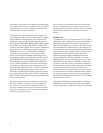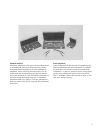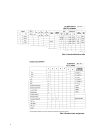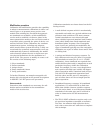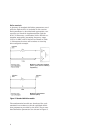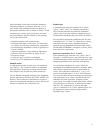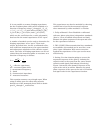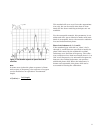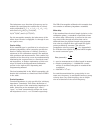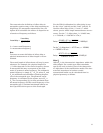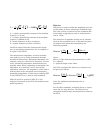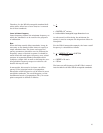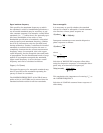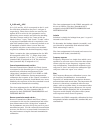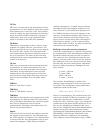
The inductance as a function of frequency can be
modeled by specifying the coefficients of a third-
order polynomial (L
0
+ L
1
ϫ f + L
2
ϫ f
2
+ L
3
ϫ f
3
),
with units of L
0
(nH), L
1
(10
-24
H/Hz),
L
2
(10
-33
H/Hz
2
) and L
3
(10
-42
H/Hz
3
).
For the waveguide example, the inductance of the
offset short circuits is negligible. L
0
through L
3
are
set equal to zero.
Fixed or sliding
If the standard type is specified to be a load or an
arbitrary impedance, then it must be specified as
fixed or sliding. Selection of “sliding” provides a
sub-menu in the calibration sequence for multiple
slide positions and measurement. This enables cal-
culation of the directivity vector by mathematically
eliminating the response due to a non-ideal termi-
nal impedance. A further explanation of this tech-
nique is found in the Measurement Calibration
section in the Agilent 8510 Operating and
Programming manual.
The load standard #4 in the WR-62 waveguide cali-
bration kit is defined as a fixed load. Enter FIXED
in the table.
Terminal impedance
Terminal impedance is only specified for “arbitrary
impedance” standards. This allows definition of
only the real part of the terminating impedance in
ohms. Selection as the standard type “short,”
“open,” or “load” automatically assigns the termi-
nal impedance to be 0, ∞ or 50 ohms respectively.
The WR-62 waveguide calibration kit example does
not contain an arbitrary impedance standard.
Offset delay
If the standard has electrical length (relative to the
calibration plane), a standard is specified to have
an offset delay. Offset delay is entered as the one-
way travel time through an offset that can be
obtained from the physical length using propaga-
tion velocity of light in free space and the appro-
priate permittivity constant. The effective
propagation velocity equals . See Appendix B
for a further description of physical offset lengths
for sexed connector types.
Delay (seconds) =
ᐉ = precise measurement of offset length in meters
ε
r
= relative permittivity (= 1.000649 for coaxial
airline or air-filled waveguide in standard lab
conditions)
c = 2.997925 x 10
8
m/s
In coaxial transmission line, group delay is con-
stant over frequency. In waveguide however, group
velocity does vary with frequency due to disper-
sion as a function of the cut-off frequency.
ᐉ
√
ε
r
c
12
c
√
ε
r



